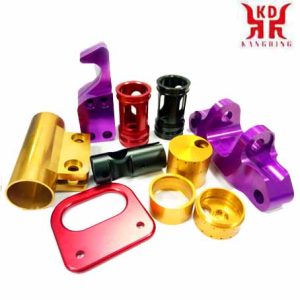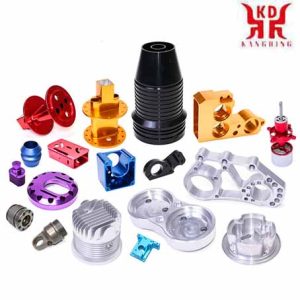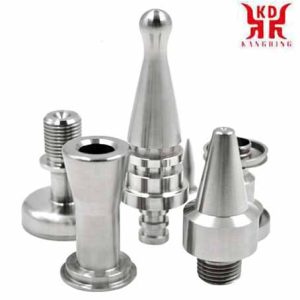我們都知道加工零件精度的重要性. It is worthy of in-depth study and special attention to the accuracy of cnc machining.
What is meant by Precision in CNC Machining?
The precision in numerical control machining is defined by the ability to manufacture parts according to dimensions and specifications required in machinery governed by Numerical Control.
Usually when we talk about precision, we refer to tolerances and surface finish.

CNC 加工精度
In this post we mention the term numerical control. So we invite you to read our article that talks about the history of numerical control and how it has influenced machining, both of standard materials and special materials.
What does precision depend on in CNC machining processes?
There are four fundamental factors that directly influence the precision of machining and basically depend on the infrastructures of the company. That is to say, of the facilities, of the machinery, of the fixing systems and of the measuring equipment.

Precision of milled parts
CNC machinery.
The CNC machinery has to be able to carry out machining of different geometries and in multiple operations, so that their values always repeat within certain margins. These are defined by the customer based on the requirements of the products that will finally incorporate the manufacturing parts. Technology has evolved the world of the cnc machine, even giving it the ability to carry out chip removal and additive manufacturing operations at the same time.
These values can be tenths, hundredths or microns and will depend on the rigidity of the structure, the feedback systems (guides, encoders, ETC …) and in general on the quality of the components that make it up.
An also crucial aspect are the axes of the machine. In the post about 5-axis machining, we talked about the advantages of this type of cnc centers. The accuracy of the measurements is lost when we have to release the piece to carry out successive operations. 所以, a five-axis cnc machine allows machining operations to be carried out on five of the six faces of the part, without the need to release it.
The same is also true of multitasking CNC lathes. These machines are capable of handling complex machining where milling and turning operations coexist. But when it comes to large series, the most suitable machines are those that are oriented to turning.
The turning consists of the manufacture of parts of revolution by machining by chip removal, using cutting tools and for long series.

Accuracy of 5-axis machining parts
The machining workshop facilities.
From certain tolerance values, the Company’s facilities play a very important role. The fact that the ground is decoupled from vibrations will prevent deviations in the machines, on the order of microns.
It is also critical that measurement and production equipment are temperature controlled. In latitudes like ours, in Valencia, where we have thermal variations of more than 35 degrees between summer and winter, the machines suffer deviations close to a tenth, despite having temperature compensation.
The fixing elements.
Both the systems that secure the piece to the machine bed, as well as those that mount the tools that will carry out the machining, must be in line with the required tolerance values, also depending on the machining to be carried out.
In the first case, the fixing of the parts to the machines, we will differentiate between the machining center and the lathe, because of how different they are.

Precision of parts processed by lathe
CNC centers.
In the case of CNC machining centers, the clamps and clamping tools are those that hold the part and must be stable, rigid and must repeat clamping piece after piece.
CNC車床.
When we refer to the lathes (whether they are CNC, multitasking or turning), the pieces are fixed to the plate by means of claws or pliers. The correct turning of the former and the excellent quality of the latter are essential if we want the precision of the lathe to be transferred to the parts.
工具持有人.
In machine tools, milling cutters, 演習, taps, ETC. are attached to the machine spindle through so-called “holders” or clamps. There are different types. In the case of MIPESA, we use tool holders with thermal fixation that guarantee a maximum jump of 2µ.
Measurement equipment.
It is of little use to manufacture well if later we are not able to measure accurately.
為此原因, it is necessary to have the necessary equipment in the Company, duly calibrated.
另外, it is necessary to provide the staff with the relevant training both for its use and for conservation and preservation. 為了這, the Quality team is the maximum guarantor when establishing both the calibration and training programs.
Others.
In the manufacturing processes, the tools, the machining conditions must be adapted according to the machining and the materials, in order to guarantee stable products that are suitable for the demands of the company.
Experience, apart from a good machinery park, is a fundamental factor when dealing with certain geometry pieces and special requirements. Even more so when working with materials with special hardness and toughness.
Terminology about precision in cnc machining.
Below and as a help, we leave a series of terms used in the field of precision in cnc machining.
Mechanical tolerance:
The manufacturing tolerance can be defined as the maximum and minimum values that a certain item must measure in order to be accepted as suitable.
Sensitivity:
The sensitivity of an instrument is defined as the relationship between its response and the magnitude of the dimension that we are measuring.
Resolution:
Refers to measuring equipment. It is defined as the smallest increase in the variable under measurement that can be detected with certainty by an instrument.
Accuracy and precision:
The value of a parameter is said to be very accurate when it is perfectly defined. 另一方面, a value is said to be exact the closer it is to the true value.
Repeatability:
In an instrument it is the capacity of the same to repeat the same value when measuring the same piece several times. In a machine, it is the ability of the machine to repeat a dimension or geometry when manufacturing the same part a number of times.
 English
English العربية
العربية 中文(漢字)
中文(漢字) Čeština
Čeština Dansk
Dansk Nederlands
Nederlands Suomi
Suomi Français
Français Deutsch
Deutsch Italiano
Italiano 日本語
日本語 ಕನ್ನಡ
ಕನ್ನಡ 한국어
한국어 Português
Português Русский
Русский Slovenčina
Slovenčina Español
Español Svenska
Svenska Türkçe
Türkçe

